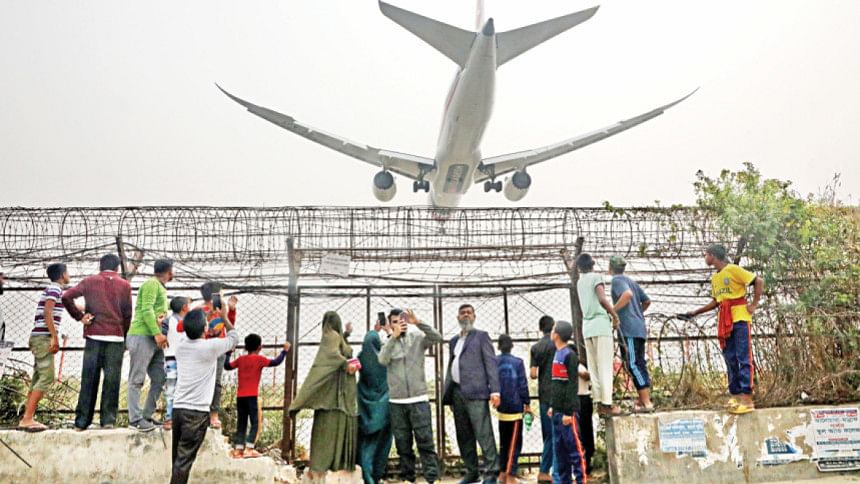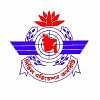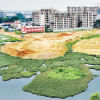CAAB’s monopoly is a barrier to aviation growth

In Bangladesh, airlines are often the primary target of complaints about poor services, both from passengers and the media. While some of these grievances are justified, not all issues can be attributed solely to the airlines.
General passengers may not realise that nearly 30 years after airline privatisation, the Civil Aviation Authority of Bangladesh (CAAB) still has a full monopoly on the country's airport and aviation infrastructure.
CAAB's bureaucrats, lacking accountability, have squandered crores in the name of airport development since the 1990s, seeking billions for unnecessary and wasteful projects. It submitted an exorbitant Tk 10,000 crore funding request to the government to extend Saidpur airport's runway from 6,000 feet to 10,000 feet in the name of regional connectivity. The question is: did CAAB conduct a business case with a detailed financial forecast to justify its funding request?
According to CAAB, the project will transform the Saidpur airport into an international one as well as a regional cargo hub. The extended runway would be able to accommodate larger aircraft carrying over 300 people, targeting passenger as well as cargo aircraft from Nepal, Bhutan, and India's Seven Sisters.
According to media reports, in 2019, Nepal expressed interest in enhancing regional connectivity by establishing direct flights between its small regional airports—Bhadrapur and Biratnagar—and Saidpur in Bangladesh. Both of the Nepali airports have a single 5,000-foot runway. Saidpur airport, with a lower altitude and longer runway (6,000 feet), can accommodate much larger aircraft than the Bhadrapur and Biratnagar airports. Meanwhile, Bhutan, due to its high altitude and mountainous terrain, does not have an airport capable of handling as large an aircraft as Saidpur can.
Moreover, Saidpur is the farthest Bangladeshi airport from the population centres in the Seven Sisters region. Bangladesh's three existing international airports—Dhaka, Chattogram, and Sylhet—despite being closer, have no direct air service with that region in India.
Even after spending billions of dollars on constructing three under-utilised 10,000-foot runways outside Dhaka (Chattogram, Sylhet, and Cox's Bazar), CAAB continues to push the false narrative that an airport must have a 10,000-foot runway to operate international flights. In reality, the primary requirement for an airport to be designated "international" is the presence of a customs and immigration facility. To establish regional connectivity with Nepal and Bhutan, Saidpur simply requires a customs and immigration processing facility—not a costly, billion-dollar runway expansion. Its existing runway is sufficient to accommodate flights from Bhadrapur and Biratnagar airports in Nepal and any airport in Bhutan.
Besides, one can take the Skiathos Alexandros Papadiamantis Airport in Greece as a case in point. It handled over 600,000 passengers across Europe in 2024 utilising a 5,341-foot runway.
The development of Bogura airport can also be presented as another example of rampant waste and incompetence.
In January 2025, CAAB announced that Bogura airport needed a 1,300-foot runway expansion, costing taxpayers Tk 1,200 crore. It would take two years to start commercial service, it said.
The existing runway and passenger processing facilities at Bogura airport may require some repairs and upgrades to initiate commercial operations, but not an expensive and prolonged runway expansion.
Despite receiving billions of dollars in taxpayer funding and benefiting from low labour costs, CAAB, which serves as the regulator, promoter, and sole provider of airports and air traffic control services, has yet to succeed in building a healthy aviation sector.
According to the International Air Transport Association (IATA), the total economic impact of aviation in Bangladesh is only $5.3 billion, compared to over $17 billion in other similarly sized economies, such as Denmark and Vietnam. Vietnam's commercial jet fleet is nearly eight times larger than that in Bangladesh. Even more concerning is that Bangladesh's aviation industry lacks the skilled workforce and infrastructure to effectively operate and maintain a fleet of only 25 commercial jets.
The civil aviation authority has also not been able to attract a single airline from regions outside the Asia-Pacific and the Middle East to operate flights to Bangladesh. This has tremendously impacted the country's connectivity, trade, remittance flow, and overall economic growth.
Unless CAAB is restructured solely as a regulatory body and airport operations are spun off into separate entities, Bangladesh will keep facing challenges in building a globally competitive aviation industry.
To run the country's airports, Bangladesh could adopt the Canadian model, where each airport is leased to a non-profit organisation comprising local and national stakeholders. These organisations would compete with one another and take full responsibility for funding the operation and development of airports, operating independently without government or political interference. The government will be able to collect a substantial amount of revenue from the airports in the form of lease payments, VAT, and other passenger-specific taxes.
The July uprising has allowed us to question those in power. Now is the time to rein in CAAB's monopolisation over the country's airports, and ensure that they are run by competent, professional, and an accountable manpower.
Erfan Chowdhury is a US-based consultant working in the aerospace and defence industry.
Views expressed in this article are the author's own.
Follow The Daily Star Opinion on Facebook for the latest opinions, commentaries and analyses by experts and professionals. To contribute your article or letter to The Daily Star Opinion, see our guidelines for submission.

 For all latest news, follow The Daily Star's Google News channel.
For all latest news, follow The Daily Star's Google News channel. 








Comments